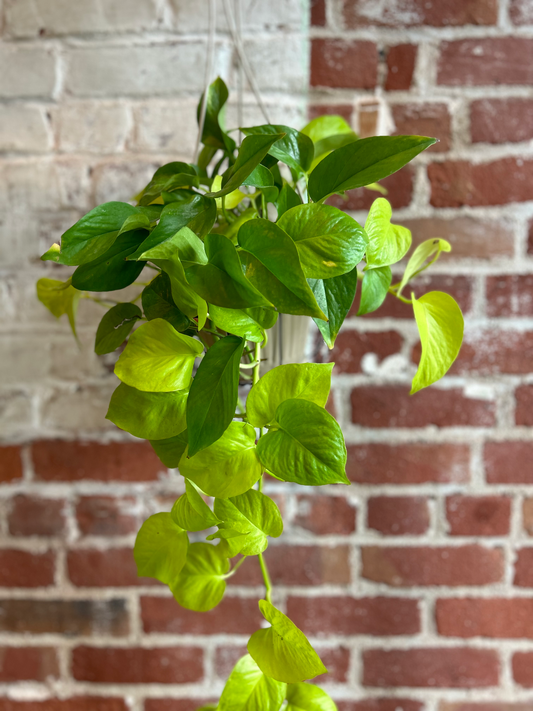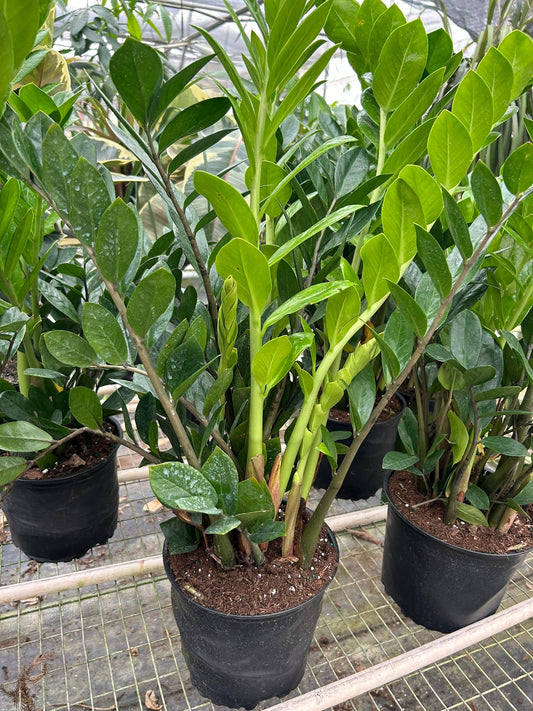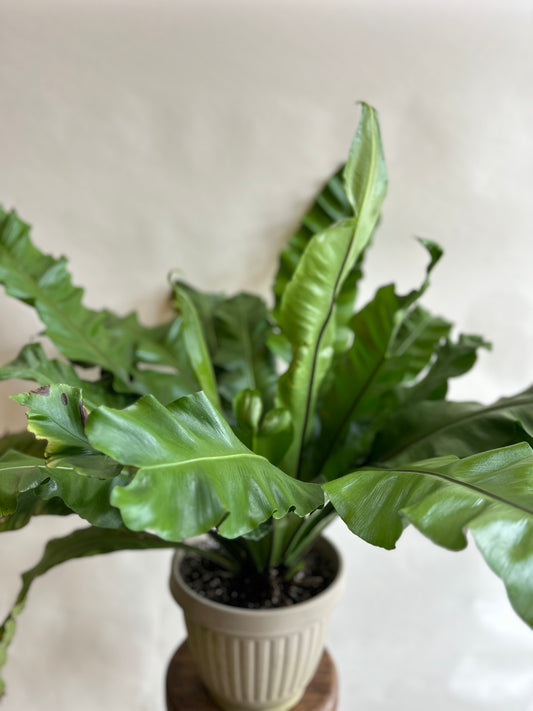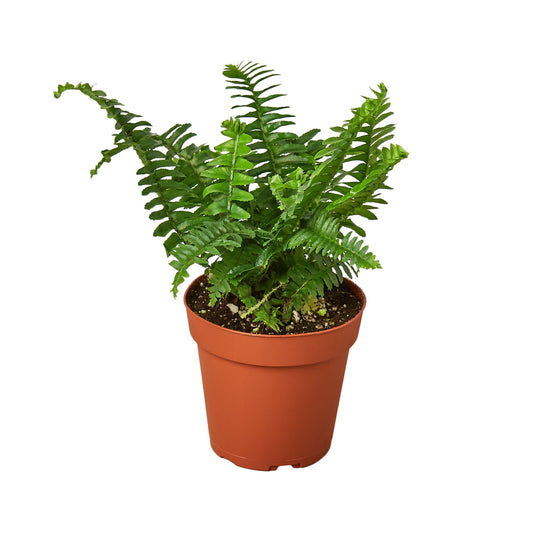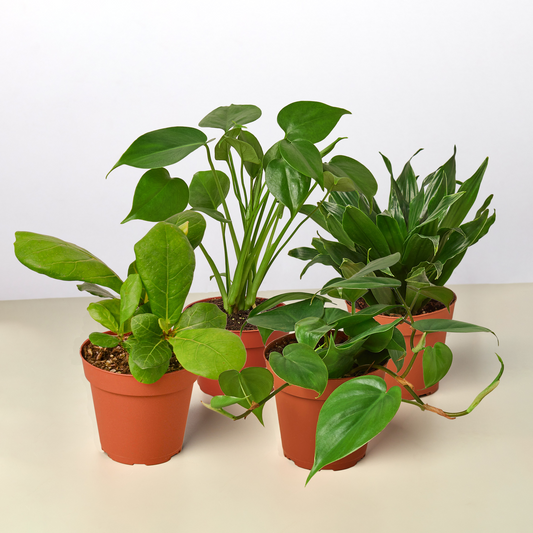Do You Need a Moss Pole For a Hindu Rope Plant?
Cafe Planta Team
There's a certain charm to the Hindu Rope Plant, with its twisting, trailing vines and glossy, crinkled leaves. This unique plant, also known as Hoya Carnosa Compacta, has captured the hearts of many plant lovers. But a common question arises: Do you need a moss pole for your Hindu Rope Plant?
In this article, we'll explore whether a moss pole is necessary for your Hindu Rope Plant, discuss its natural growth habits, and provide tips for care and maintenance to keep your plant thriving. We'll also cover some creative ways to incorporate this beautiful plant into your home decor.
Understanding the Growth Habits of the Hindu Rope Plant
Before deciding on the need for a moss pole, it's helpful to understand how the Hindu Rope Plant naturally grows. This plant is a type of Hoya, known for its trailing or climbing vines. In its native habitat, it often grows as an epiphyte, meaning it attaches itself to trees and other structures to reach sunlight.
Because of its nature, the Hindu Rope Plant can adapt to various growing conditions. It doesn't need to climb to survive, but it will happily use support if provided. This flexibility is one reason it makes such a delightful houseplant. While it can be grown as a trailing plant from a hanging basket, offering it a structure to climb can lead to a fuller, bushier appearance.
Interestingly, whether your plant climbs or trails, its growth won't be significantly different in terms of leaf development or flowering. The plant tends to grow slowly, but with proper care, it can produce stunning clusters of star-shaped flowers.
Pros and Cons of Using a Moss Pole
Now that we know a bit more about how the Hindu Rope Plant grows, let's weigh the pros and cons of using a moss pole. This will help you determine if it's the right choice for your plant.
Pros:
- Encourages Climbing: A moss pole can give your plant the opportunity to climb, mimicking its natural environment.
- Space-Saving: By training your plant to grow upwards, you free up horizontal space, making it ideal for smaller living areas.
- Visual Interest: A climbing plant can add a vertical element to your decor, creating a striking visual impact.
- Fuller Appearance: When given support, the plant can appear bushier and more robust.
Cons:
- Maintenance: Training the plant to climb can require some effort, as you'll need to gently tie or wrap the vines around the pole.
- Potential for Damage: If not handled carefully, you could damage the plant while trying to attach it to the pole.
- Cost and Effort: Buying or making a moss pole adds an extra step to your plant care routine.
Considering these points, whether to use a moss pole is largely a matter of personal preference and the specific aesthetic you want for your space.
Alternatives to a Moss Pole
If you're not convinced a moss pole is necessary or desirable, there are alternatives to consider that can support your Hindu Rope Plant's growth.
Hanging Baskets:
One popular option is to let your Hindu Rope Plant trail from a hanging basket. This method allows the plant to cascade downwards, creating a lush, green waterfall effect. It's an excellent choice if you have vertical space to fill, such as near a window or in a corner.
Wall-Mounted Trellis:
Another creative alternative is using a wall-mounted trellis. This can provide a unique way to display your plant, making it a living piece of art. As with a moss pole, you'll need to guide the vines to grow along the trellis, but it can offer a more customized look.
DIY Structures:
If you're feeling crafty, you might consider creating your own support structure. This could be anything from a piece of driftwood to a custom-made framework of string or wire. The key is to ensure whatever you use is sturdy enough to support the plant's weight as it grows.
These options offer flexibility and allow you to tailor the plant's growth to fit your personal style and home decor.
Caring for Your Hindu Rope Plant
Regardless of whether you choose to use a moss pole or an alternative, knowing how to care for your Hindu Rope Plant is crucial to its success. Here are some essential care tips:
Light:
Your Hindu Rope Plant will thrive in bright, indirect light. While it can tolerate low light conditions, its growth will slow significantly, and flowering may become infrequent. If you notice the leaves losing their vibrant green color, it might be a sign that the plant needs more light.
Watering:
These plants prefer to dry out between waterings, so it's important not to overwater. Allow the top inch of soil to dry out before watering again. During the winter months, you can reduce watering even further.
Humidity:
As a tropical plant, the Hindu Rope Plant enjoys a bit of humidity. If your home is particularly dry, especially in the winter, consider using a humidifier or placing a tray of water near the plant to increase humidity levels.
Fertilizing:
During the growing season (spring and summer), feed your plant with a balanced, water-soluble fertilizer every 4-6 weeks. Be sure to follow the instructions on the fertilizer package to avoid overfeeding.
With these care tips in mind, your Hindu Rope Plant should be happy and healthy, regardless of how you choose to display it.
Incorporating the Hindu Rope Plant into Home Decor
Beyond its care, the Hindu Rope Plant can be a stunning addition to your home decor. Its unique, curly leaves provide texture and visual interest that can complement various interior styles.
Modern Minimalism:
In a minimalist setting, the plant's intricate leaves can serve as a focal point. Pair it with simple, clean lines and neutral colors to let its natural beauty shine. A sleek, white hanging planter or a black metal trellis can help to emphasize its form.
Bohemian Vibe:
If you lean towards a bohemian style, consider using macrame hangers or colorful pots to display your Hindu Rope Plant. Allow it to trail freely alongside other plants with different textures and heights for a relaxed, eclectic look.
Contemporary Brights:
For a more contemporary space, use vibrant pots or geometric planters to add a pop of color. Position the plant near a bright window to create an eye-catching green display that stands out against bold, modern furnishings.
Regardless of your style, the Hindu Rope Plant's versatile nature makes it easy to incorporate into any decor scheme, adding both beauty and interest to your space.
Tips for Training Your Hindu Rope Plant
If you've decided to use a moss pole or any other support structure, training your Hindu Rope Plant can enhance its appearance and health. Here are some tips to get you started:
Be Gentle:
The vines of the Hindu Rope Plant can be delicate, so always handle them with care. When attaching them to a support structure, use soft ties, like garden twine or fabric strips, to avoid damaging the plant.
Start Early:
It's easier to train a young plant than an older one that's already established a growth pattern. Begin guiding the vines when they're still flexible to encourage a climbing habit.
Regular Maintenance:
As the plant grows, continue to wrap new growth around the support structure. This not only keeps the plant looking tidy but also helps it develop a strong, healthy form.
By following these tips, you can successfully train your Hindu Rope Plant, whether it's climbing a moss pole or trailing gracefully from a basket.
Common Challenges and How to Overcome Them
Like any plant, the Hindu Rope Plant can face challenges. Here are some common issues and how to address them:
Pests:
- Mealybugs and Spider Mites: These pests can occasionally infest your plant. Regularly inspect the leaves and use insecticidal soap or neem oil to treat any infestations.
- Aphids: If you notice these small insects, a simple spray of water can often dislodge them. For more persistent problems, insecticidal soap can also be effective.
Fungal Issues:
Overwatering can lead to root rot, a fungal issue that can damage your plant. Ensure your pot has good drainage, and don't let the plant sit in water. If you suspect root rot, remove the plant from its pot, trim any affected roots, and repot it in fresh soil.
Leaf Discoloration:
Leaves turning yellow or brown can indicate various issues, from incorrect watering to nutrient deficiencies. Assess your plant's environment and care routine to pinpoint the cause and make necessary adjustments.
By staying vigilant and responding promptly to these challenges, you can keep your Hindu Rope Plant healthy and thriving.
Choosing the Right Pot and Soil
The right pot and soil can make a big difference in your Hindu Rope Plant's health. Here's what to consider:
Pot Selection:
- Size: Choose a pot that's proportionate to your plant's size. Too large a pot can lead to excess soil moisture, while too small a pot can restrict growth.
- Material: Terracotta pots are excellent for plants that prefer well-draining soil, as they allow moisture to evaporate through the sides. However, plastic pots retain moisture longer, which might be beneficial in drier environments.
- Drainage: Ensure the pot has drainage holes to prevent waterlogging, which can lead to root rot.
Soil Composition:
Use a well-draining potting mix, ideally one designed for cacti or succulents. You can also create your own mix by combining regular potting soil with perlite or pumice to enhance drainage.
Choosing the right pot and soil helps ensure your Hindu Rope Plant has the foundation it needs to grow strong and healthy.
When to Repot Your Hindu Rope Plant
Repotting is an essential part of plant care that allows your Hindu Rope Plant to continue thriving. Here are the signs that it might be time to repot:
Root Bound:
If you notice roots growing out of the drainage holes or circling the top of the soil, your plant is likely root bound and needs a larger pot.
Soil Degradation:
Over time, soil can break down, losing its ability to drain properly. If water isn't soaking in or the soil feels compacted, it might be time to refresh it.
Growth Stagnation:
If your plant's growth has slowed or stopped, even with proper care, repotting can provide fresh nutrients and space to encourage new growth.
When repotting, choose a pot that's one size larger than the current one, and be sure to use fresh soil to give your plant the best chance for continued health.
Final Thoughts
Whether or not to use a moss pole for your Hindu Rope Plant ultimately depends on your personal preference and aesthetic goals. This versatile plant can thrive in various settings, from hanging baskets to climbing structures, as long as its basic care needs are met.
At Cafe Planta, we're here to help you on your plant journey. Whether you're looking for new plants, accessories, or just some friendly advice, we're excited to connect with you. If you have questions, feel free to email us or DM us on Instagram. Let's grow together!


